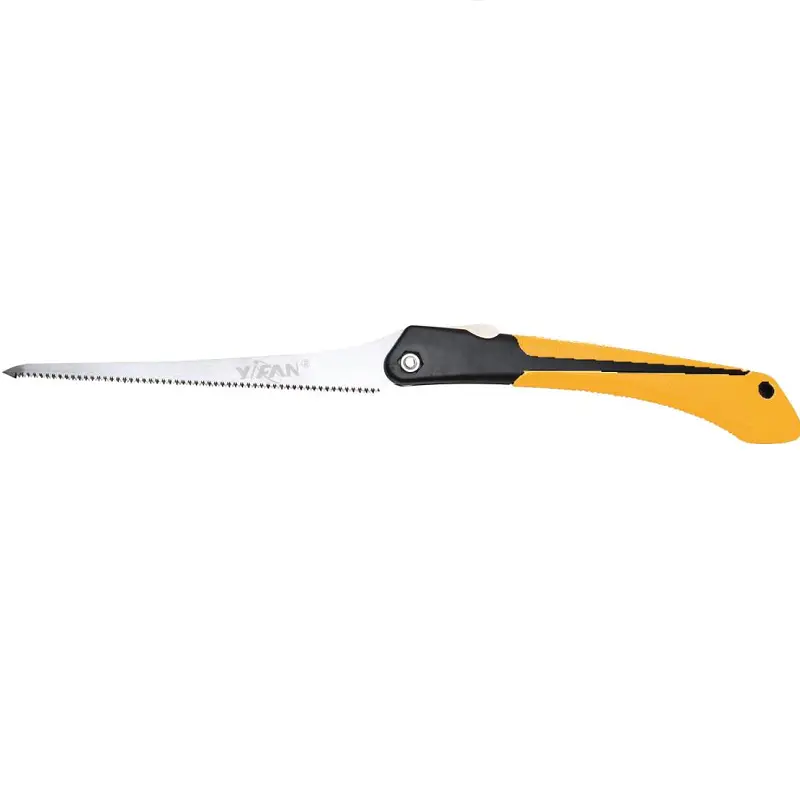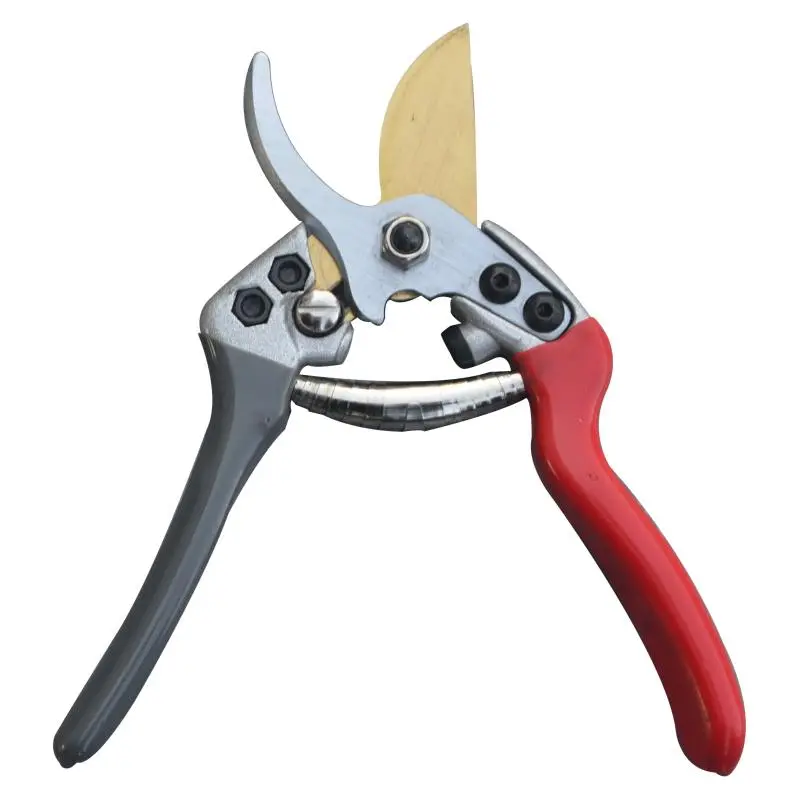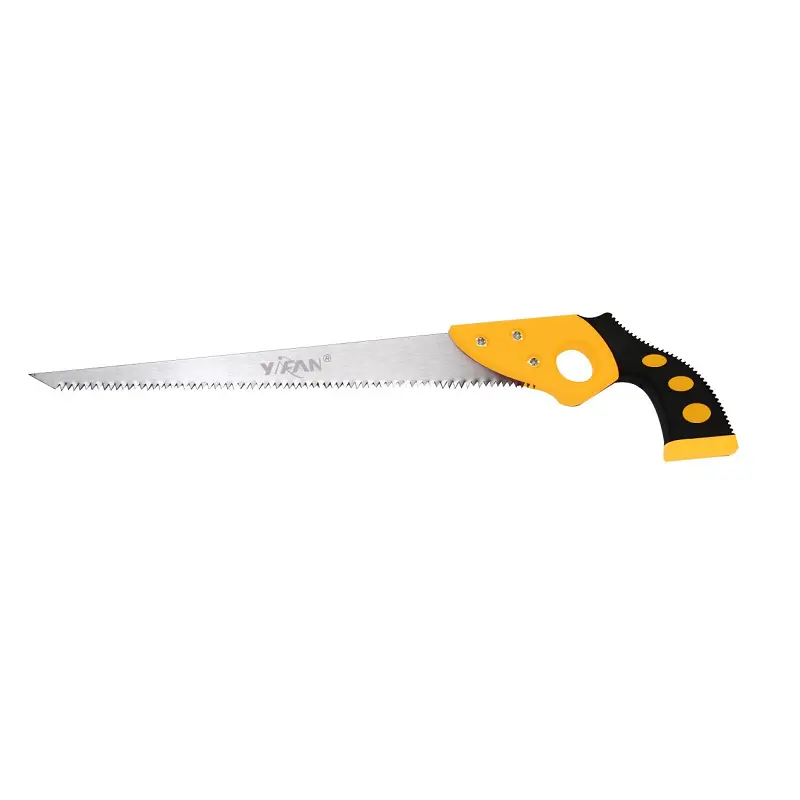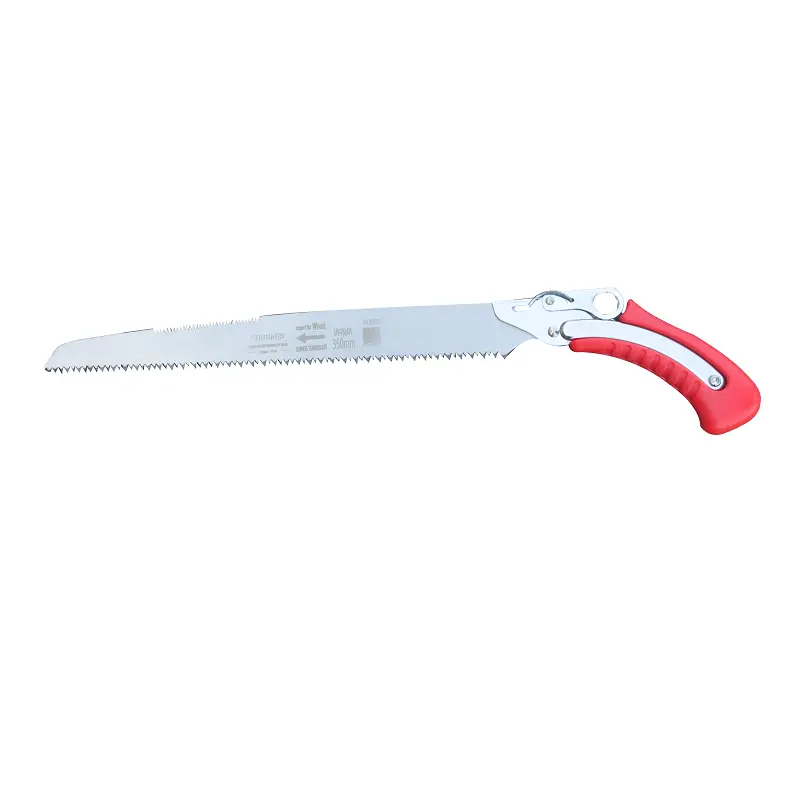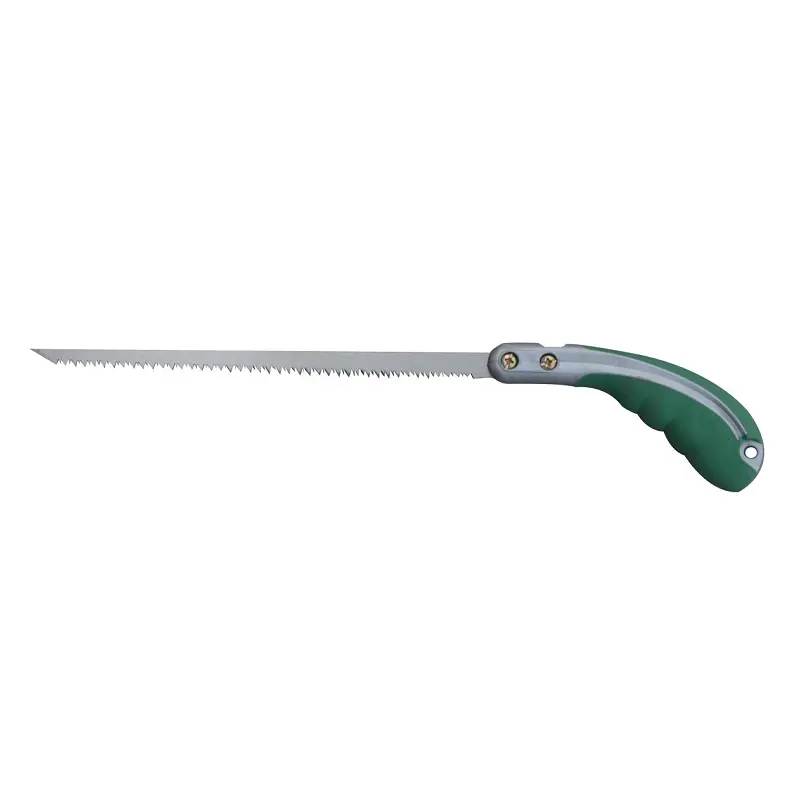Black-Handle Fruit Tree Saw
一、Production Description:
Fruit tree saws are tools specially designed for pruning and maintaining fruit trees, and they play an important role in orchard management.
Fruit tree saws are usually made of high-quality steel, such as high-carbon steel or alloy steel, to ensure their hardness and durability. The saw blades are finely ground and heat-treated, making the teeth sharp and wear-resistant, and can easily cope with the sawing of fruit tree branches.
In terms of design, fruit tree saws take full account of ergonomic principles. The handles are usually made of non-slip and comfortable materials, such as rubber or soft plastic, and the shape fits the human hand to reduce fatigue caused by long-term use. Some handles are also designed with shock-absorbing structures to further enhance the comfort of use.
The shape and spacing of its teeth are also carefully designed. The teeth are generally small and dense, which can reduce damage to fruit trees during sawing and make the sawing process smoother. At the same time, the edge angle and sharpness of the teeth are also optimized to improve sawing efficiency.
二、Use:
1.Control the overall shape and height of fruit trees to make them easier to manage and pick.
2.When fruit trees are infected with diseases, diseased branches may spread the pathogens. Using a fruit tree saw to cut off the diseased branches can prevent the spread of the disease.
3.When replanning or regrowing an orchard, a fruit tree saw can help remove trees that are no longer needed.
三、Performance has advantages:
1、High-quality fruit tree saws use high-hardness steel to make saw teeth, which can easily saw through fruit tree branches of various thicknesses and remain sharp after long-term use.
2.The shape and length of the saw handle are ergonomic, so your hands won’t get tired easily when using it. For example, a saw handle with anti-slip texture and a comfortable grip allows fruit farmers to maintain a good operating experience during long hours of operation.
3.The good arrangement and sharpness of the saw teeth make it possible to reduce the force required during sawing, thus improving work efficiency. Compared with traditional tools, the sawing work can be completed faster.
4.Saw blades usually have guards or safety locking mechanisms to prevent accidental injury when not in use.
四、Process characteristics
(1)0The teeth of a fruit tree saw are usually carefully designed. The shape, size and arrangement of the teeth will affect the efficiency and effect of sawing. Generally speaking, the teeth are three-sided or multi-sided ground to increase the sharpness and wear resistance of the teeth.
(2)The hardness of the teeth is critical to the performance of a fruit saw. Through special quenching or heat treatment processes, the hardness of the teeth can be increased, making them more wear-resistant and less likely to become blunt. For example, the teeth of some fruit saws may be quenched at high temperatures to enhance their hardness.
(3)The material selection of the saw blade will also affect the performance of the fruit tree saw. Common saw blade materials include high carbon steel, alloy steel, etc. These materials have good strength and toughness and can meet the working requirements of the fruit tree saw.
(4)In order to improve the rust resistance and service life of the fruit tree saw, the surface of the saw blade may be plated, painted or other surface treatment processes. These treatments can reduce the corrosion and oxidation of the saw blade and extend its service life.
(5)The handle design of the fruit tree saw conforms to the ergonomic principles, which is comfortable to hold and reduces hand fatigue. The length and shape of the handle will also affect the convenience and comfort of use.

.png)
-150x150.png)
